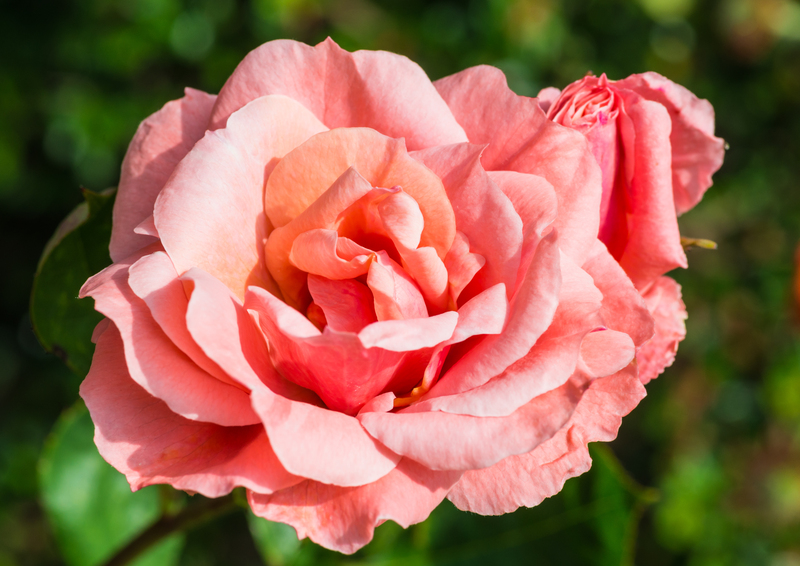All-Season Lawn Care Guide for the UK
Posted on 02/09/2024
Achieving and maintaining a lush, green lawn is a year-round commitment that necessitates understanding the different seasons and how they affect your grass. The UK climate, with its temperate maritime conditions, poses unique challenges and opportunities for lawn enthusiasts. From ensuring proper fertilisation to employing correct mowing techniques, each season brings its own set of tasks. Here's an all-season lawn care guide to help UK homeowners keep their lawns healthy and vibrant throughout the year.
Spring: Reviving and Preparing Your Lawn
Spring is the season of rejuvenation, making it the ideal time to wake your lawn from its winter dormancy and prepare it for the upcoming months. The key tasks during this period include:
- Aeration: Over the winter, soil can become compacted. Aeration helps relieve this compaction by perforating the soil, allowing air, water, and nutrients to penetrate the grassroots.
- Overseeding: Patchy areas may emerge after winter. Overseeding fills in these patches and promotes a dense lawn. Use a grass seed suited to your specific lawn conditions.
- Fertilising: Apply a balanced, slow-release fertilizer. This provides essential nutrients to support new growth.
- Moss and Weed Control: Moss can thrive in UK's damp climate. Using a moss killer and a broad-spectrum weed killer can prevent them from taking over your lawn.
- Mowing: Begin regular mowing, gradually reducing the height of your cut as the season progresses. Ensuring your mower blades are sharp is crucial to prevent tearing the grass, which can make it more susceptible to disease.

Summer: Maintaining the Lush Look
Summers in the UK can be variable, with periods of drought and high temperatures posing risks to your lawn. The significant tasks to focus on are:
- Watering: During dry spells, water your lawn early in the morning or late in the evening to minimise evaporation. Aim for deep, infrequent watering rather than shallow, frequent watering.
- Mowing: Continue to mow regularly but avoid cutting the grass too short. Longer grass blades help shade the soil, reducing moisture loss and promoting deeper root growth.
- Weeding: Keep an eye out for perennial weeds and remove them promptly. Hand weeding or using a selective weed killer can help maintain a weed-free lawn.
- Pest Control: Be vigilant for signs of pest infestations, such as chafer grubs or leatherjackets. There are specific treatments available to deal with these pests.
- Feeding: Use a high-nitrogen summer lawn feed to sustain growth and keep your lawn looking its best.
Autumn: Preparing for the Cold Months
Autumn is a crucial period for repairing summer damage and preparing your lawn for the colder months. Key tasks for this season include:
- Aeration: Just like spring, autumn is another excellent time for aeration. This process alleviates compaction caused by summer foot traffic.
- Scarification: This involves removing thatch - a layer of organic matter that can prevent water and nutrients from reaching the soil. Use a scarifier to rake out this thatch.
- Overseeding: Autumn weather is ideal for overseeding since the soil is still warm and there's adequate moisture. This helps repair any bare patches and thickens the lawn.
- Top Dressing: Apply a thin layer of top-dressing material (compost, loam, or sand mixed with soil) to improve soil structure and support new seed growth.
- Fertilising: Use a low-nitrogen, high-potassium fertiliser to strengthen the grass and improve its disease resistance over winter.
- Leaf Clearance: Regularly rake fallen leaves to prevent them from smothering the grass and fostering disease.
Winter: Protecting Your Lawn
Winter might seem like a dormant period for your lawn, but there are important steps to ensure it emerges healthy in the spring. Focus on the following:
- Clearing Debris: Remove any debris, such as fallen leaves and branches, to avoid creating habitats for pests and diseases.
- Avoiding Traffic: Minimise walking on the lawn during frosty conditions as this can damage the grass. Frozen grass blades are brittle and prone to breaking.
- Mowing: If the winter is mild and you notice significant growth, give the lawn a light trim but keep the mower blades high.
- Watching for Diseases: Be vigilant for signs of fungal diseases like Fusarium Patch (Snow Mould). Proper autumn care helps mitigate these risks, but winter surveillance is still important.
- Protecting Edges and Slopes: Edges and slopes can suffer from winter runoff. Consider temporary barriers or drainage channels to protect these areas from erosion.

General Tips and Best Practices
Beyond the season-specific tasks, certain general lawn care practices can make a significant difference:
- Soil Testing: Conduct a soil test to understand its current pH and nutrient levels. This helps in choosing the right fertilisers and amendments to maintain a balanced and healthy soil environment.
- Choosing the Right Grass: Different grass species have varying tolerances to UK's climate. Ryegrass, fescues, and bentgrasses are popular choices, with each offering unique benefits like wear tolerance, disease resistance, and aesthetic appeal.
- Watering Techniques: Always prefer deep watering over light sprinkling. Deep watering encourages roots to grow deeper into the soil, enhancing drought resistance and overall lawn resilience.
- Regular Inspection: Periodically inspect your lawn for signs of pests, diseases, or nutrient deficiencies. Early detection allows for prompt management, preventing minor issues from escalating.
- Equipment Maintenance: Regularly check and maintain your lawn care equipment. Sharp mower blades, clean scarifiers, and well-calibrated sprayers ensure efficient and effective lawn management.
Conclusion
Maintaining a healthy and beautiful lawn in the UK involves seasonal adjustments and close attention to various factors such as soil health, watering, mowing, and pest control. By following this all-season lawn care guide, UK homeowners can ensure their lawns remain vibrant and resilient throughout the year. Remember, consistency is key - regular care and timely interventions will yield the best results, allowing you to enjoy a lush green lawn across all seasons.






 Certified and experienced landscapers
Certified and experienced landscapers



 Get a Quote
Get a Quote